Transcriptional and functional profiling defines human small intestinal macrophage subsets
- PMID: 29273642
- PMCID: PMC5789404
- DOI: 10.1084/jem.20170057
Transcriptional and functional profiling defines human small intestinal macrophage subsets
Abstract
Macrophages (Mfs) are instrumental in maintaining immune homeostasis in the intestine, yet studies on the origin and heterogeneity of human intestinal Mfs are scarce. Here, we identified four distinct Mf subpopulations in human small intestine (SI). Assessment of their turnover in duodenal transplants revealed that all Mf subsets were completely replaced over time; Mf1 and Mf2, phenotypically similar to peripheral blood monocytes (PBMos), were largely replaced within 3 wk, whereas two subsets with features of mature Mfs, Mf3 and Mf4, exhibited significantly slower replacement. Mf3 and Mf4 localized differently in SI; Mf3 formed a dense network in mucosal lamina propria, whereas Mf4 was enriched in submucosa. Transcriptional analysis showed that all Mf subsets were markedly distinct from PBMos and dendritic cells. Compared with PBMos, Mf subpopulations showed reduced responsiveness to proinflammatory stimuli but were proficient at endocytosis of particulate and soluble material. These data provide a comprehensive analysis of human SI Mf population and suggest a precursor-progeny relationship with PBMos.
© 2018 Bujko et al.
Figures
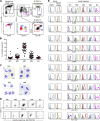
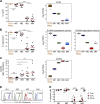

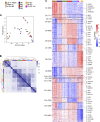
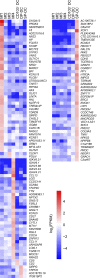
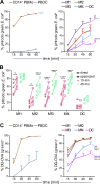
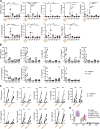
Similar articles
-
Optimal Isolation Protocols for Examining and Interrogating Mononuclear Phagocytes From Human Intestinal Tissue.Front Immunol. 2021 Sep 1;12:727952. doi: 10.3389/fimmu.2021.727952. eCollection 2021. Front Immunol. 2021. PMID: 34566985 Free PMC article.
-
Purification of dendritic cell and macrophage subsets from the normal mouse small intestine.J Immunol Methods. 2015 Jun;421:1-13. doi: 10.1016/j.jim.2015.02.013. Epub 2015 Mar 18. J Immunol Methods. 2015. PMID: 25796561
-
The diverse ontogeny and function of murine small intestinal dendritic cell/macrophage subsets.Immunobiology. 2010 Sep-Oct;215(9-10):692-7. doi: 10.1016/j.imbio.2010.05.013. Epub 2010 Jun 4. Immunobiology. 2010. PMID: 20580119 Review.
-
Optimization of murine small intestine leukocyte isolation for global immune phenotype analysis.J Immunol Methods. 2014 Mar;405:97-108. doi: 10.1016/j.jim.2014.01.014. Epub 2014 Feb 4. J Immunol Methods. 2014. PMID: 24508527
-
Phenotypic and functional profiling of mouse intestinal antigen presenting cells.J Immunol Methods. 2015 Jun;421:20-26. doi: 10.1016/j.jim.2015.03.023. Epub 2015 Apr 17. J Immunol Methods. 2015. PMID: 25891794 Free PMC article. Review.
Cited by
-
Th17 Immunity in the Colon Is Controlled by Two Novel Subsets of Colon-Specific Mononuclear Phagocytes.Front Immunol. 2021 Apr 28;12:661290. doi: 10.3389/fimmu.2021.661290. eCollection 2021. Front Immunol. 2021. PMID: 33995384 Free PMC article.
-
Glycomacropeptide Prevents Iron/Ascorbate-Induced Oxidative Stress, Inflammation and Insulin Sensitivity with an Impact on Lipoprotein Production in Intestinal Caco-2/15 Cells.Nutrients. 2020 Apr 22;12(4):1175. doi: 10.3390/nu12041175. Nutrients. 2020. PMID: 32331475 Free PMC article.
-
A Lacticaseibacillus rhamnosus secretome induces immunoregulatory transcriptional, functional and immunometabolic signatures in human THP-1 monocytes.Sci Rep. 2024 Apr 10;14(1):8379. doi: 10.1038/s41598-024-56420-8. Sci Rep. 2024. PMID: 38600116 Free PMC article.
-
Niche-specific functional heterogeneity of intestinal resident macrophages.Gut. 2021 Jul;70(7):1383-1395. doi: 10.1136/gutjnl-2020-323121. Epub 2020 Dec 31. Gut. 2021. PMID: 33384336 Free PMC article. Review.
-
TREM-1+ Macrophages Define a Pathogenic Cell Subset in the Intestine of Crohn's Disease Patients.J Crohns Colitis. 2021 Aug 2;15(8):1346-1361. doi: 10.1093/ecco-jcc/jjab022. J Crohns Colitis. 2021. PMID: 33537747 Free PMC article.
References
-
- Bain C.C., Scott C.L., Uronen-Hansson H., Gudjonsson S., Jansson O., Grip O., Guilliams M., Malissen B., Agace W.W., and Mowat A.M.. 2013. Resident and pro-inflammatory macrophages in the colon represent alternative context-dependent fates of the same Ly6Chi monocyte precursors. Mucosal Immunol. 6:498–510. 10.1038/mi.2012.89 - DOI - PMC - PubMed
-
- Bain C.C., Bravo-Blas A., Scott C.L., Perdiguero E.G., Geissmann F., Henri S., Malissen B., Osborne L.C., Artis D., and Mowat A.M.. 2014. Constant replenishment from circulating monocytes maintains the macrophage pool in the intestine of adult mice. Nat. Immunol. 15:929–937. 10.1038/ni.2967 - DOI - PMC - PubMed
-
- Berg D.J., Davidson N., Kühn R., Müller W., Menon S., Holland G., Thompson-Snipes L., Leach M.W., and Rennick D.. 1996. Enterocolitis and colon cancer in interleukin-10-deficient mice are associated with aberrant cytokine production and CD4(+) TH1-like responses. J. Clin. Invest. 98:1010–1020. 10.1172/JCI118861 - DOI - PMC - PubMed
Publication types
MeSH terms
Substances
LinkOut - more resources
Full Text Sources
Other Literature Sources

